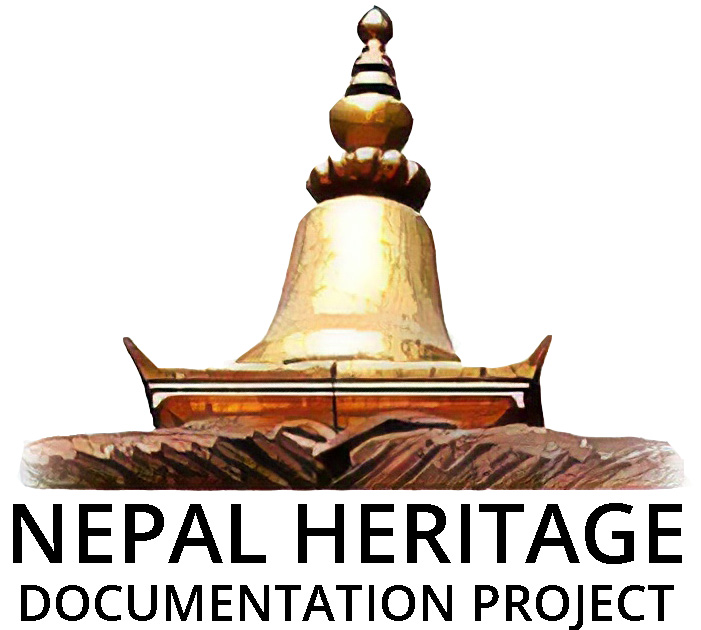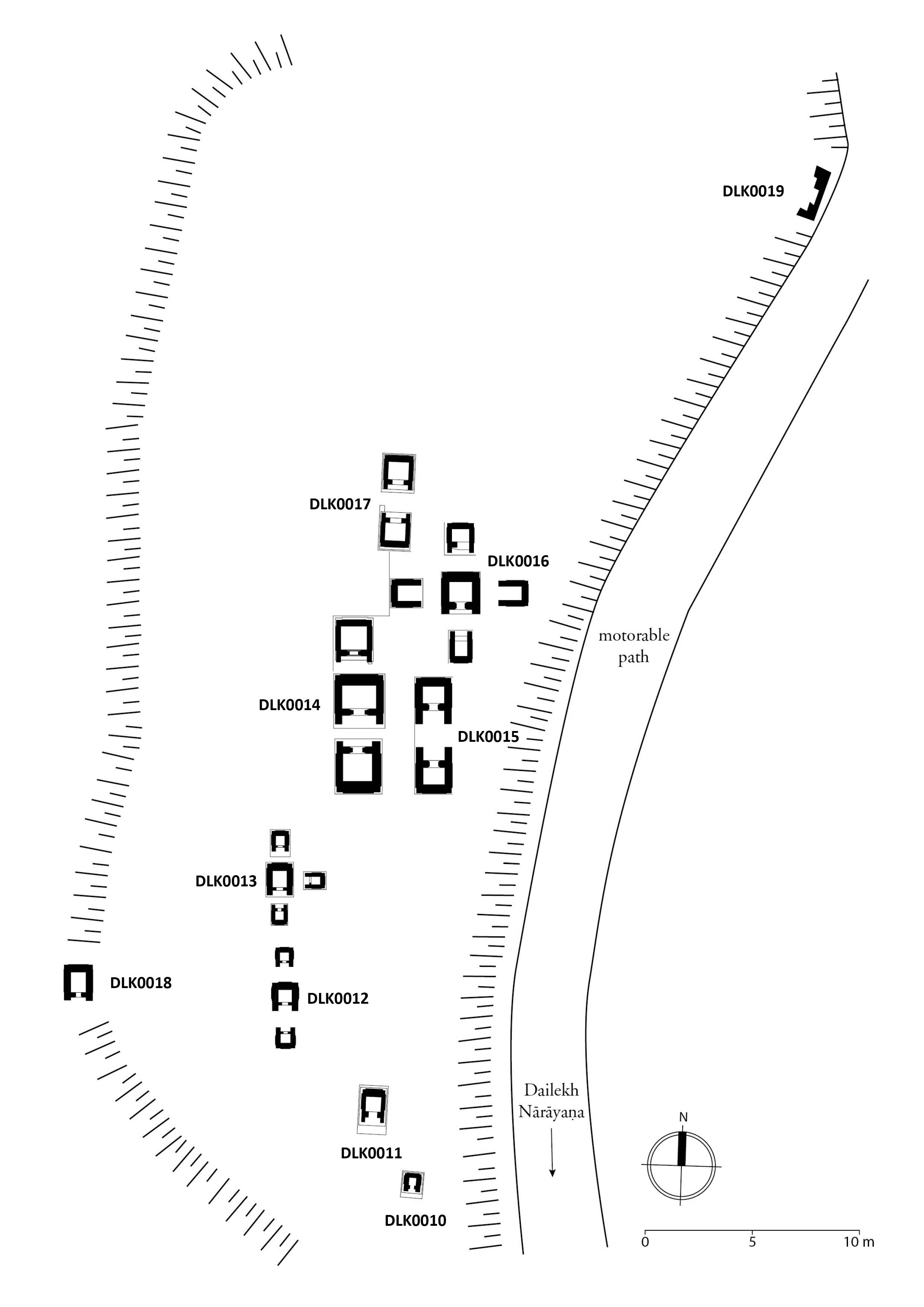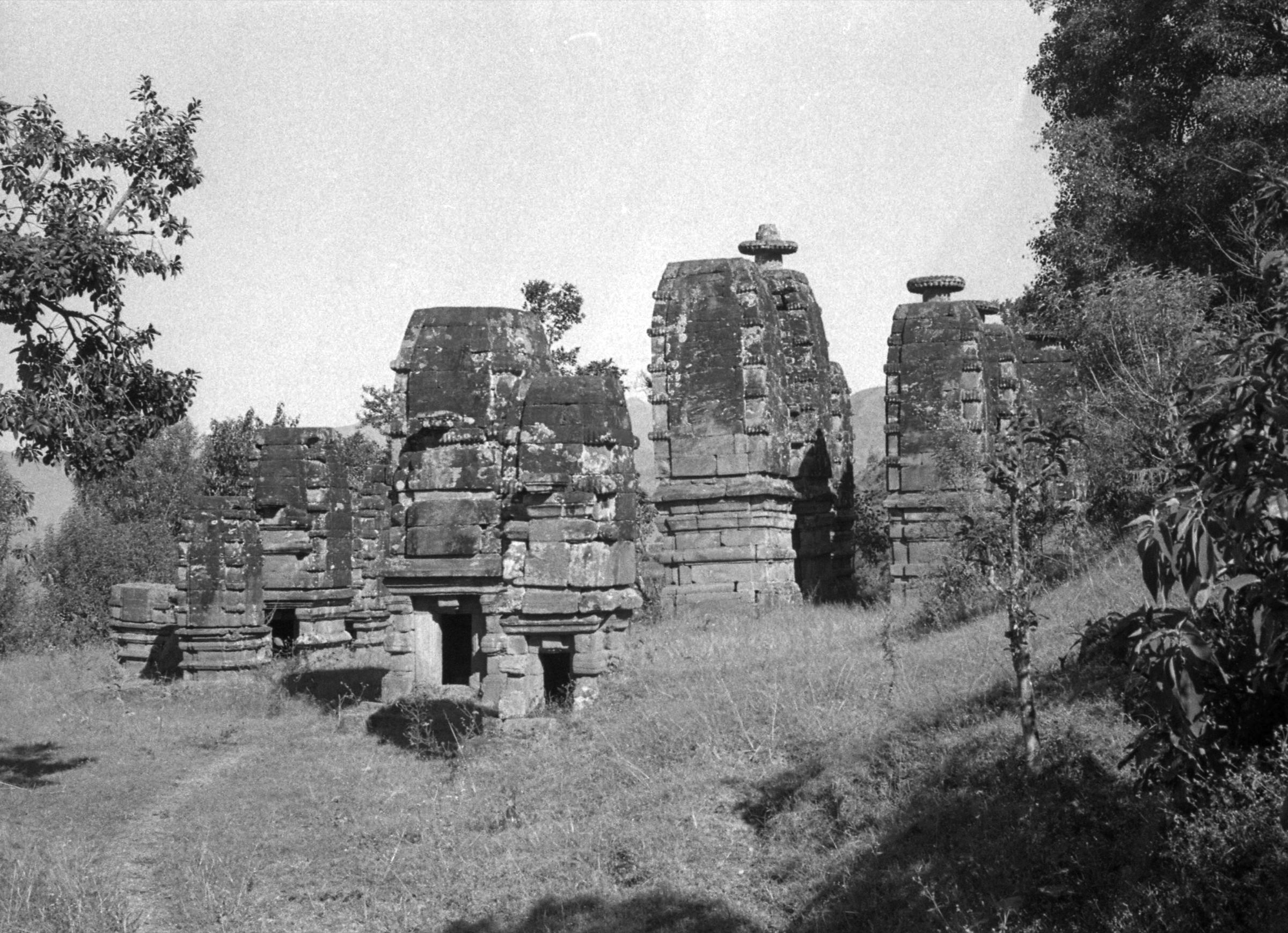Bhurtī temple complex

The Bhurtī temple complex is located three kilometres north of Nārāyaṇa, the Dailekh district headquarters. It is comprised of 22 śikhara temples and one stone fountain.
Śikhara temples are known in west Nepal as devala (pronounced deval dewal). They are related to the so called ‘latina nāgara’ or ‘North Indian Nāgara’ type of monuments. This architecture is primarily found in the Himalayas from the 7th century onwards. Between the 10th and 11th centuries, a new type of latina developed between Uttarakhand and western Nepal. As it is less ornamented than earlier temples, this new typology was recently coined ‘simplified latina’. The monuments in Bhurti fall into this category.
The Bhurtī devala were constructed in different configurations: free standing (ekle devala), by pairs (duī devala) and by groups of five (pañcadevala). While free standing temples and duī devala are rather common throughout the region, pañcadevala are mostly found in the districts of Dailekh, Achham and Kalikot, areas that were controlled by the Rāskoṭi kings.
Today only one complete pañcadevala (DLK0016) in Bhurti remains. Two other pañcadevala (DLK0012 and 0013) have lost one or two śikhara. The Duī Devala of Bhurtī (DLK0015) with a central pavilion connecting its two śikhara is a rarity in the Karnali region.
The temples of Bhurtī show no signs of religious affiliation. Elsewhere pañcadevala were affiliated with Shaiva which may have also been the case in Bhurtī. Beyond their religious affiliation, the organization of the site and the cultural context of West Nepal during the medieval period indicates that the temples had a memorial purpose.
The construction of these temples took place between the 13th and 15th centuries, a period corresponding to the latter part of the Khaśa Malla empire and the early phase of the Rāskoṭi dynasty. The Khaśa Malla empire was a trans-Himalayan polity stretching from Mustang to Uttarakhand between the 12th and 14th centuries. One of the Khaśa Mallas’ capitals was established in Dullu, six kilometres west of Nārāyaṇa. The second half of the 14th century marks the progressive collapse of the empire and the rise of petty kingdoms. Malaya Varmā (r. 1378-1389) was the first king of the Rāskoṭi dynasty and the territory under his control encompassed most of the Karnali basin, including today’s Kalikot and Dailekh districts, and probably parts of Jumla and Achham. The kings of Dullu and Dailekh belonged to the Rāskoṭi lineage of Malaya Varmā.
In 2008, the ‘Bhurti Temple Complex of Dailekh’ was included in UNESCO’s World Heritage Tentative List.


